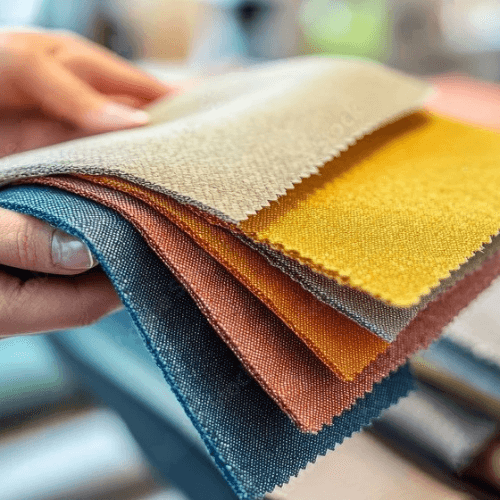Essential Tips for Successfully Exporting Textiles from China

Exporting textiles from China can be a lucrative venture, given the country’s status as a global textile powerhouse. However, the process can be complex and requires careful planning and execution. In this blog, we will explore essential tips to help you navigate the intricacies of textile exports successfully, ensuring compliance with regulations and optimizing logistics.
### Understanding the Textile Export Landscape
China’s textile industry is vast, with exports reaching approximately $303 billion in 2022. The country is known for its diverse range of fabrics, including cotton, polyester, silk, and technical textiles. With increasing demand for sustainable and high-quality fabrics worldwide, understanding the export landscape is crucial for any business looking to thrive in this sector.
### 1. **Conduct Thorough Market Research**
Before embarking on your export journey, conducting comprehensive market research is vital. This includes:
– **Identifying Target Markets:** Understand which countries have a high demand for specific textiles. Analyze market trends and consumer preferences in these regions.
– **Competitor Analysis:** Study your competitors to identify their strengths and weaknesses. This insight can help you position your products effectively.
– **Regulatory Requirements:** Research the import regulations of your target markets. Different countries have varying compliance standards regarding textile imports.
### 2. **Ensure Compliance with Regulations**
Compliance with international trade regulations is crucial when exporting textiles. Key aspects to consider include:
– **Export Licensing:** Depending on your product and destination country, you may need an export license. Ensure that you secure this before proceeding with shipments.
– **Quality Standards:** Verify that your textiles meet the quality standards set by the importing country. This may involve obtaining specific certifications or permits.
– **Customs Documentation:** Prepare all necessary documentation meticulously. Common documents include commercial invoices, packing lists, certificates of origin, and bills of lading. Accurate documentation is essential for smooth customs clearance.
### 3. **Partner with Reliable Freight Forwarders**
Choosing the right freight forwarder can significantly impact your export process:
– **Experience in Textile Exports:** Select a freight forwarder experienced in handling textile shipments. They can provide valuable insights into best practices and help navigate regulatory complexities.
– **Shipping Options:** Evaluate different shipping methods (air freight vs. sea freight) based on cost, urgency, and volume of goods. Sea freight is often more economical for large shipments, while air freight offers faster delivery times.
– **Insurance Coverage:** Protect your investment by securing freight insurance to cover potential loss or damage during transit.
### 4. **Optimize Packaging and Labeling**
Proper packaging and labeling are essential components of successful textile exports:
– **Packaging Materials:** Use durable packaging materials to protect textiles from damage during transportation. Consider moisture-resistant packaging for sensitive fabrics.
– **Labeling Requirements:** Ensure that labels comply with international standards. Include essential information such as fiber content, care instructions, country of origin, and size specifications.
– **Sustainability Considerations:** As sustainability becomes increasingly important to consumers, consider using eco-friendly packaging materials to enhance your brand’s appeal.
### 5. **Implement Efficient Logistics Management**
Efficient logistics management is critical to ensuring timely delivery of your textiles:
– **Supply Chain Coordination:** Maintain clear communication with suppliers and logistics partners to streamline operations and avoid delays.
– **Inventory Management:** Implement effective inventory management practices to avoid overstocking or stockouts during peak seasons.
– **Tracking Shipments:** Utilize tracking technology to monitor shipments in real-time. This transparency helps manage customer expectations and enhances service quality.
### 6. **Build Strong Relationships with Suppliers**
Establishing strong relationships with suppliers in China can lead to smoother operations:
– **Regular Communication:** Keep lines of communication open with suppliers to address any issues promptly and ensure alignment on production schedules.
– **Quality Control Measures:** Implement quality control checks at various stages of production to ensure that the final products meet your standards before shipment.
– **Negotiation Skills:** Develop negotiation skills to secure favorable terms with suppliers while maintaining a mutually beneficial relationship.
### 7. **Stay Informed About Industry Trends**
The textile industry is constantly evolving; staying informed about trends can give you a competitive edge:
– **Sustainability Practices:** Monitor trends related to sustainable textiles as consumer demand shifts toward eco-friendly options.
– **Technological Innovations:** Keep an eye on technological advancements in textile manufacturing and logistics that could enhance efficiency or reduce costs.
### Conclusion
Successfully exporting textiles from China requires careful planning, attention to detail, and a proactive approach to compliance and logistics management. By conducting thorough market research, ensuring regulatory compliance, partnering with reliable freight forwarders, optimizing packaging, managing logistics efficiently, building strong supplier relationships, and staying informed about industry trends, you can navigate the complexities of textile exports effectively.
As the global demand for high-quality textiles continues to rise, embracing these essential tips will position your business for success in the competitive international market. Whether you are a seasoned exporter or just starting out, these strategies will help you streamline your operations and achieve your export goals in 2024 and beyond.






